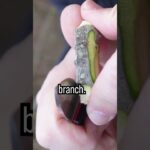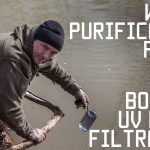Michael Pritchard: How to make filthy water drinkable
Good morning everybody. I’d like to talk about a couple of things today. The first thing is water. Now I see you’ve all been enjoying the waterthat’s been provided for you here at the conference,over the past couple of days. And I’m sure you’ll feel that it’s from a safe source. But what if it wasn’t?What if it was from a source like this?Then statistics would actually saythat half of you would now be sufferingwith diarrhea. I talked a lot in the past about statistics,and the provision of safe drinking water for all. But they just don’t seem to get through. And I think I’ve worked out why. It’s because, using current thinking,the scale of the problemjust seems too huge to contemplate solving. So we just switch off:us, governments and aid agencies. Well, today, I’d like to show youthat through thinking differently,the problem has been solved. By the way, since I’ve been speaking,another 13,000 people around the worldare suffering now with diarrhea. And four children have just died. I invented Lifesaver bottlebecause I got angry. I, like most of you, was sitting down, the day after Christmas in 2004,when I was watching the devastating newsof the Asian tsunami as it rolled in,playing out on TV. The days and weeks that followed,people fleeing to the hills,being forced to drink contaminated wateror face death. That really stuck with me. Then, a few months later,Hurricane Katrina slammed into the side of America. “Okay,” I thought, “here’s a First World country, let’s see what they can do. “Day one: nothing. Day two: nothing. Do you know it took five days to get water to the Superdome?People were shooting each other on the streetsfor TV sets and water. That’s when I decided I had to do something. Now I spent a lot of time in my garage, over the next weeks and months,and also in my kitchen — much to the dismay of my wife. However, after a few failed prototypes,I finally came up with this, the Lifesaver bottle. Okay, now for the science bit. Before Lifesaver, the best hand filters were only capableof filtering down to about 200 nanometers. The smallest bacteria is about 200 nanometers. So a 200-nanometer bacteriais going to get through a 200-nanometer hole. The smallest virus, on the other hand,is about 25 nanometers. So that’s definitely going to get through those 200 nanometer holes. Lifesaver pores are 15 nanometers. So nothing is getting through. Okay, I’m going to give you a bit of a demonstration. Would you like to see that?I spent all the time setting this up, so I guess I should. We’re in the fine city of Oxford. So — someone’s done that up. Fine city of Oxford, so what I’ve done is I’ve goneand got some water from the River Cherwell,and the River Thames,that flow through here. And this is the water. But I got to thinking, you know,if we were in the middle of a flood zonein Bangladesh, the water wouldn’t look like this. So I’ve gone and got some stuff to add into it. And this is from my pond. Have a smell of that, mister cameraman. Okay. Right. We’re just going to pour that in there. Audience: Ugh!Michael Pritchard: Okay. We’ve got some runofffrom a sewage plant farm. So I’m just going to put that in there. Put that in there. There we go. And some other bits and pieces, chuck that in there. And I’ve got a gift here from a friend of mine’s rabbit. So we’re just going to put that in there as well. Okay. Now. The Lifesaver bottle works really simply. You just scoop the water up. Today I’m going to use a jugjust to show you all. Let’s get a bit of that poo in there. That’s not dirty enough. Let’s just stir that up a little bit. Okay, so I’m going to take this really filthy water,and put it in here. Do you want a drink yet? Okay. There we go. Replace the top. Give it a few pumps. Okay?That’s all that’s necessary. Now as soon as I pop the teat,sterile drinking water is going to come out. I’ve got to be quick. Okay, ready?There we go. Mind the electrics. That is safe, sterile drinking water. Cheers. There you go Chris. What’s it taste of?Chris Anderson: Delicious. Michael Pritchard: Okay. Let’s see Chris’s program throughout the rest of the show. Okay? Okay. Lifesaver bottle is used by thousands of people around the world. It’ll last for 6,000 liters. And when it’s expired, using failsafe technology,the system will shut off, protecting the user. Pop the cartridge out. Pop a new one in. It’s good for another 6,000 liters. So let’s look at the applications. Traditionally, in a crisis, what do we do?We ship water. Then, after a few weeks, we set up camps. And people are forced to come into the camps to get their safe drinking water. What happens when 20,000 people congregate in a camp?Diseases spread. More resources are required. The problem just becomes self-perpetuating. But by thinking differently,and shipping these,people can stay put. They can make their own sterile drinking water,and start to get on with rebuilding their homes and their lives. Now, it doesn’t require a natural disasterfor this to work. Using the old thinking, of national infrastructureand pipe work, is too expensive. When you run the numbers on a calculator,you run out of noughts. So here is the “thinking different” bit. Instead of shipping water,and using man-made processes to do it,let’s use Mother Nature. She’s got a fantastic system. She picks the water up from there,desalinates it, for free, transports it over there,and dumps it onto the mountains, rivers, and streams. And where do people live? Near water. All we’ve go to dois make it sterile. How do we do that?Well, we could use the Lifesaver bottle. Or we could use one of these. The same technology, in a jerry can. This will process 25,000 liters of water;that’s good enough for a family of four,for three years. And how much does it cost?About half a cent a day to run. Thank you. So, by thinking differently, and processing waterat the point of use,mothers and children no longer have to walk four hours a dayto collect their water. They can get it from a source nearby. So with just eight billion dollars,we can hit the millennium goal’s targetof halving the number of peoplewithout access to safe drinking water. To put that into context,The U. K. government spends about 12 billion poundsa year on foreign aid. But why stop there?With 20 billion dollars, everyone can have access to safe drinking water. So the three-and-a-half billion peoplethat suffer every year as a result,and the two million kids that die every year,will live. Thank you.



